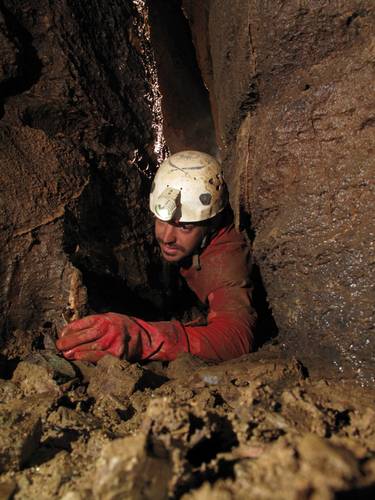The novel Shibumi by Trevanian may be a little bit of a classic, shall we say, written as it was in the 1970s, and set then and during World War II. But the plot and themes are no less compelling for being described in language that is a trifle dated, and when I reread it recently, I discovered it’s still one of my favorites. Shibumi has everything: espionage; a mysterious, cosmopolitan protagonist with heightened senses and erotic training; spelunking.
Yes. Spelunking. Nicholai Hel discovers the sport of cave exploration and uses it for personal satisfaction and also ultimately, to save himself when the plot thickens. As a mysterious, cosmopolitan protagonist, he loves it.
And why wouldn’t he? Here is a somewhat lengthy, but usefully illustrative passage from the novel explaining the allure of spelunking for Nicholai:
In the caves, there was the constant presence of cold and damp, primordial fears for man, and real ones for the caver, as most grave accidents and deaths result from hypothermia. There was also the animal dread of the dark, of endless blackness and the ever-present thought of getting lost in mazes of slits and belly crawls so tight that retreat was impossible because of the jointing of the human body. Flash flooding could fill the narrow caves with water with only minutes of warning or none. And there was the constant mental pressure of knowing that just above him, often scraping against his back as he wriggled through a tight cave, were thousands of tons of rock that must inevitably one day obey gravity and fill in the passage.
Blerf. I can’t even type that description without starting to hyperventilate and rock back and forth to soothe myself. Encapsulated in the above paragraph are the contents of my own personal ninth circle of hell, as someone who fears the dark and enclosed spaces. (I’m glad I’m not one of those people who claims to have in-utero memories. Block that noise OUT.) Even A Guide to Responsible Caving, published by the National Speleological Society, prompts would be practitioners to question their motives, in a section called “Tolerating Misery” they explain:
Caving is not a spectator sport, and it tends to be cold and muddy. Tight passages and long crawls are not uncommon. Dangers include falling down pits, being crushed by falling rocks, drowning, and hypothermia. And then there is the possibility of getting lost and quickly dying of hypothermia or slowly starving to death.
Sounds enticing, no? And yet, that visceral reaction may be exactly what some people feel about grappling, which I love so well. While it is not as life endangering, some may find it equally odious. Indeed, in defense of going underground, the same document goes on to say, “But for people trained to cave safely, the rewards are worth the misery and risks.”
 Spelunking, or caving, as practitioners prefer to refer to it, is an activity with a large community of followers. As the above passages describe, enthusiasts go underground and explore passages that may be hundreds of feet high or just inches wide. They may go for sport, or they may go in the name of science, to learn more about the underground rivers, organisms, or geological formations that exist in caves and that are unavailable for observation above ground.
Spelunking, or caving, as practitioners prefer to refer to it, is an activity with a large community of followers. As the above passages describe, enthusiasts go underground and explore passages that may be hundreds of feet high or just inches wide. They may go for sport, or they may go in the name of science, to learn more about the underground rivers, organisms, or geological formations that exist in caves and that are unavailable for observation above ground.
The website An Introduction to Caves and Caving provides information about how to find caving groups in your area, appropriate attire, environmental concerns, and, most importantly, safety guidelines for ensuring a good experience. In particular, the recommendation is for the novice caver to venture underground only with an accomplished practitioner, learning as much as possible from direct experience under expert guidance.
So maybe caving isn’t so scary after all. There are multiple organizations in my area. Perhaps I’ll investigate one of them. But, caveats aside (no pun intended), if you like the sound of caving and get around to trying it before I do, report your experience in the comments section.
Are you a caver, or do you know someone who is? What is their experience like? Why do they do it? And what are some takeaways for the novice – or the simply terrified?
Photos courtesy of Shutterstock.






